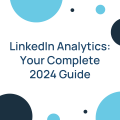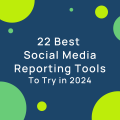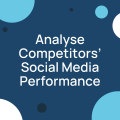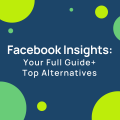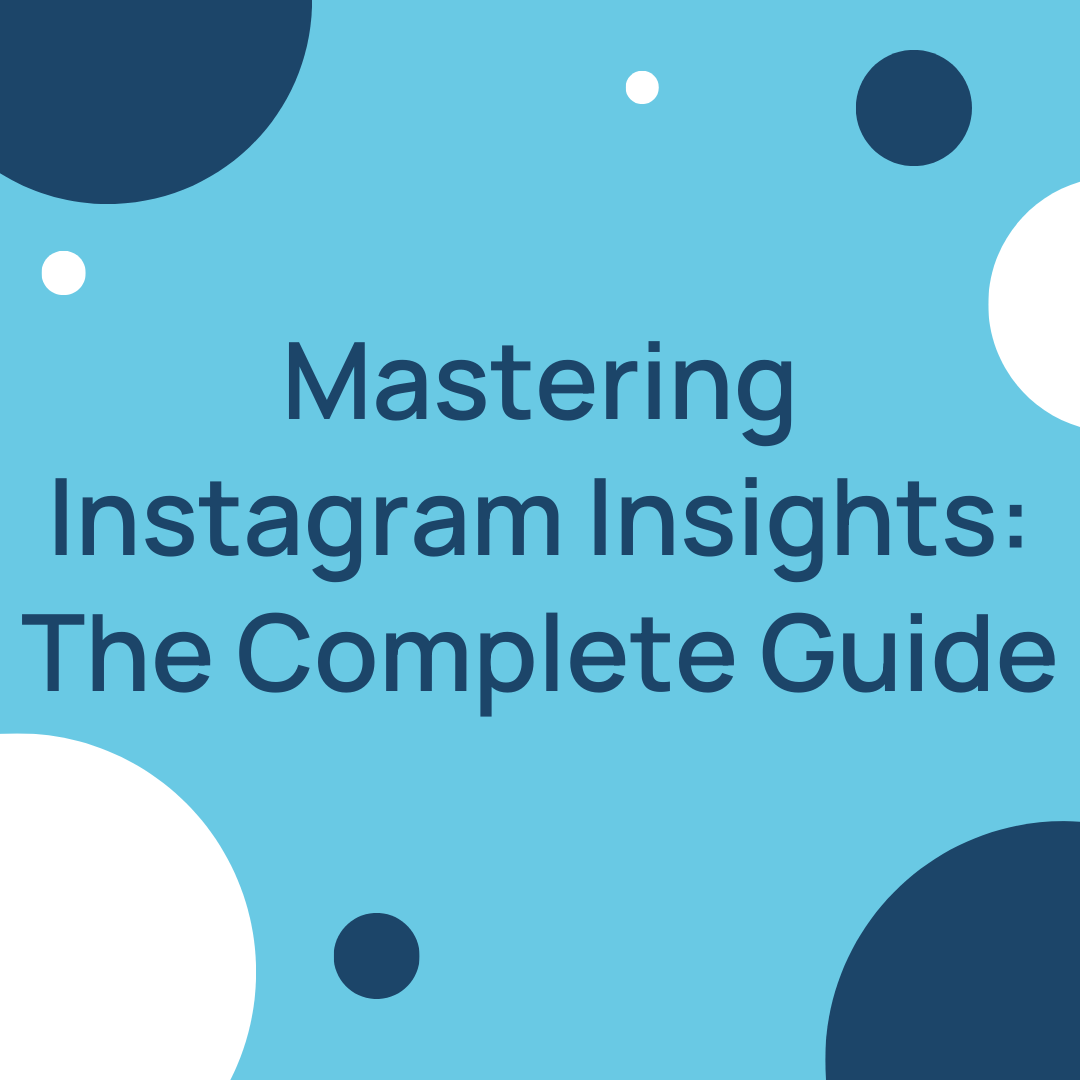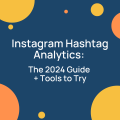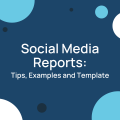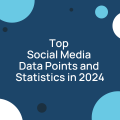Facebook Page Growth And Engagement Study July 2016
Tina Ahmed posted on 17 August 2016
Welcome to our Facebook growth and engagement study for the month of July 2016.
Every month we analyse 5,000 Facebook pages for insights into their performance. This helps give you a quick overview of what’s happening on Facebook and allows you to do a benchmark of your own performance compared to the pages in our study.
We’ll also look at the latest news and updates from the platforms to keep you up to date on everything you need to know. Let’s get started.
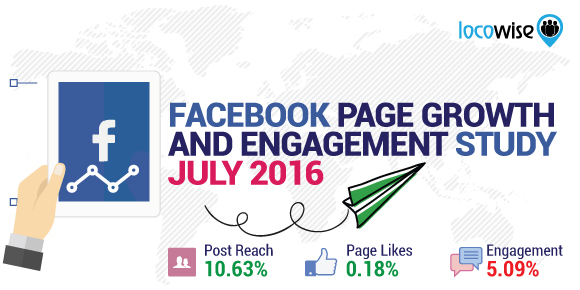
Facebook growth and engagement in July
Page likes growth in July was at 0.18%. This is a 28.57% increase compared to the last month.
Average reach per post was at 10.63% of the total audience. This is a 9.59% increase compared to June.
Videos reached 12.09% of page likes, photos 11.12%, links 8.54% and status updates 6.09%.
Average engagement per post was at 5.09% of people reached. It’s a 9.11% decrease in engagement compared to June.
Videos engaged 5.61% of people reached, status updates 5.35%, photos 5.22% and links 4.53%.
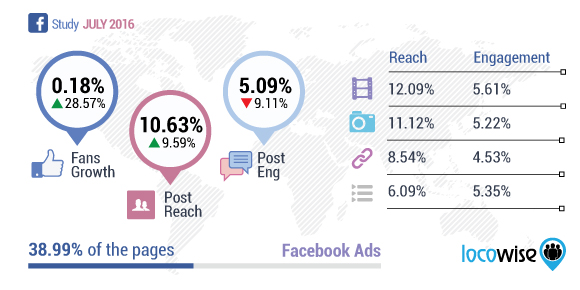
38.99% of pages used Facebook advertising in July paying for 29.47% of their total reach. This is the lowest percentage of paid reach that we’ve seen since we started doing our studies in May 2015. The previous low point was in January this year with the percentage of paid reach being at 28.5% of the total reach.
How does your brand compare to the average performance in the month of July? Do the calculations manually yourself or get a free trial for a simple and easy benchmark report on Locowise.
What’s the impact of the new algorithm change?
Facebook announced a new change to the news feed algorithm last month. The company warned that reach and referral traffic for some pages might be negatively affected by the algorithm.
March 2016 was the high point for each since we started doing our study. Average post reached 11.41% of the audience in March.
Average reach has decreased by 6.84% since March, but the reach is still on the up compared to the number we saw throughout 2015.
Reach per post is up by 48.67% since the low point in November 2015.
Link post reach was at its peak in March 2016 with average link reaching 10% of the audience. Link reach has decreased by 14.6% since then. Link posts reach is still 2.15% higher than the low point in November 2015.
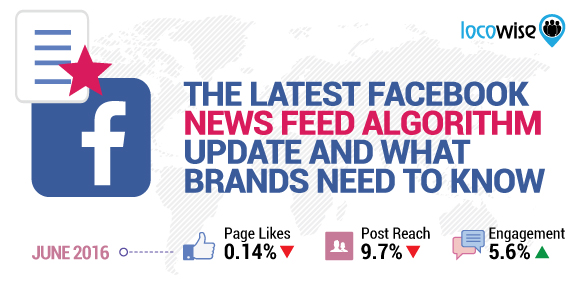
An early conclusion to the new algorithm is that there hasn’t been any dramatic and disastrous impact that some media may have feared. We’ll continue to keep an eye on the numbers.
Let’s now take a look at the latest news and updates on the platform.
Facebook has NOT run out of humans on the open Internet
Facebook added 60 million new monthly active users during the second quarter of 2016.
The app now reaches 1.71 billion monthly active users (up 15% year over year) and 1.57 billion of these are on mobile devices (up 20% year over year).
1.13 billion daily active users (16% increase) and 1.03 billion mobile daily active users (22% increase).
56.5% of all users now access the app exclusively on mobile devices.
In Q2 the company had $6.44 billion in revenue and the average revenue per user at $3.82. The profit for Q2 was at $2.05 billion.
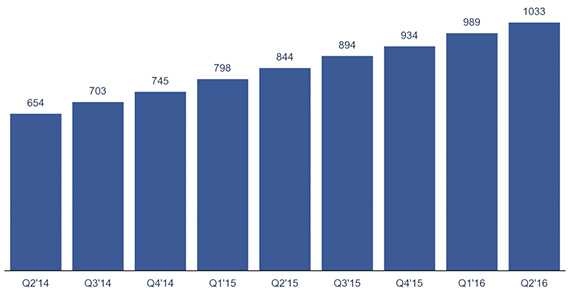
Image: Facebook (Facebook Mobile monthly users)
Facebook Messenger
There are more than 2 billion searches per day on Facebook, a 33% increase in last 9 months.
Facebook Messenger has 1 billion monthly active users with more than 1 billion messages sent between businesses and customers per month. 17 billion photos are sent every month. Messenger is now also integrated with Instant Articles.
Facebook is positioning Messenger as a perfect platform for customer service communication. Here’s what Mark had to say in a recent interview:
“Well, let me tell you where we came from — which is [every month], many millions of people will message a business page on Facebook to ask questions about that business. Increasingly, businesses are using their Facebook page as their main presence, and if you want to reach a business, messaging them on Facebook is a great way to do that. But you can imagine that having that business respond might take hours, or in some cases, a day. So one of the first applications and things that we started looking at was researching, can we build an AI system that looks at the answers that a business is giving to people and start to predict for a certain category of questions what the answers will be? We realized that we actually could in a lot of cases. And as a business responds faster, people message it more. So one thing that we’re starting to think about is if we can move businesses away from manual responses to automated ones, then that actually is dramatically faster than what people have had before.”
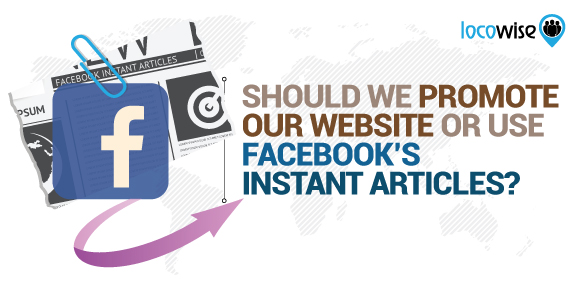
And this is where bots come in. There are now more than 18,000 bots and more than 23,000 developers on the platform.
Live and Video
Mark Zuckerberg wrote: “We’re particularly pleased with our progress in video as we move towards a world where video is at the heart of all our services.”
Facebook is adding many new features and upgrades to Facebook Live. Pre-scheduling of live streams, waiting rooms for viewers, filters and the ability for two people to stream one broadcast from different locations.
Full-screen streaming (both in portrait and landscape), the length of live stream up to 4 hours and the ability to hide reactions and comments are in too.
Facebook is paying 140 media companies and celebrities more than $50 million to post live video on the platform.
The names include publishers such as BuzzFeed, sports stars such as Michael Phelps, actors like George Takei, and YouTube celebrities such as Ray William Johnson.
Here’s a selection of brands and celebrities being paid to livestream thanks to the Wall Street Journal:

Canvas is the new post format
The interactive canvas ad format is now also available as an organic post format too. Canvas posts allow you to tell more immersive stories by combining imagery and videos. These posts will not be given any special treatment from the algorithm, but Facebook representative did state that on average people spend 31 seconds in a Canvas ad. You can learn more about Canvas here.
New Facebook page layout on desktops
New pages layout that we discussed previously is now live for all desktop users. Facebook had this to say: “We’ve introduced a new design for Pages on desktop to make it easier for people to learn about and interact with businesses on Facebook, including a new column for tab navigation and a more prominent call-to-action button.”

